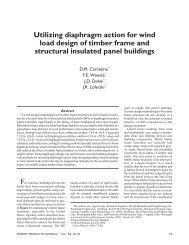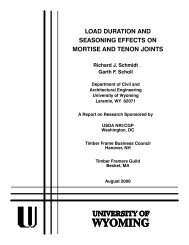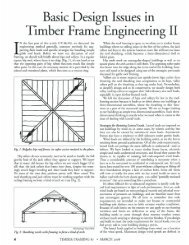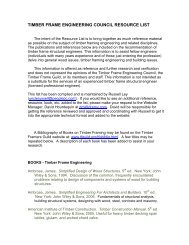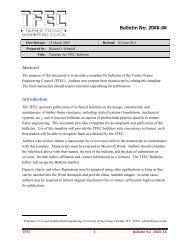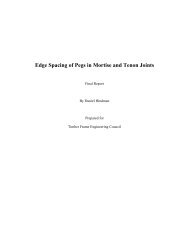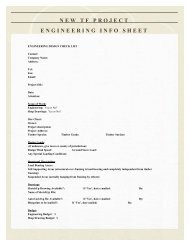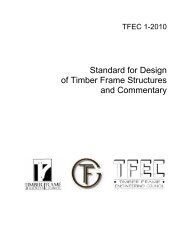Timber Frame Tension Joinery - Timber Frame Engineering Council
Timber Frame Tension Joinery - Timber Frame Engineering Council
Timber Frame Tension Joinery - Timber Frame Engineering Council
Create successful ePaper yourself
Turn your PDF publications into a flip-book with our unique Google optimized e-Paper software.
Figure 4-3 Shear Test Fixture<br />
restraint within the mortise and tenon connection and to determine relationships between<br />
the shear span and the shear capacity of the peg.<br />
When actual mortise and tenon connections are loaded to failure, the observed shear<br />
spans have been in the range of 1D or less (where D is the peg diameter). These shear spans<br />
were observed by removing the peg from the failed connection and measuring the length of<br />
the region with fibers disturbed by bending. Hence, it is necessary to understand how the<br />
shear spans affect the strength of the peg.<br />
The pegs were tested using shear spans of 1/4D, 1/2D and 1D. The load rate for<br />
the shear tests was 0.024 inches per minute in order to conform to ASTM D143-94 (ASTM,<br />
1995a). This load produced a test duration between six and ten minutes in all but a few<br />
cases. In these cases, the ultimate load was reached in just under six minutes and was<br />
probably due to abnormally weak pegs.<br />
4.4 Dowel Bearing Test Procedure<br />
The dowel bearing tests determine the compressive strength of the material<br />
surrounding the dowel. For a wood peg the dowel bearing yield strength of the material is<br />
33




